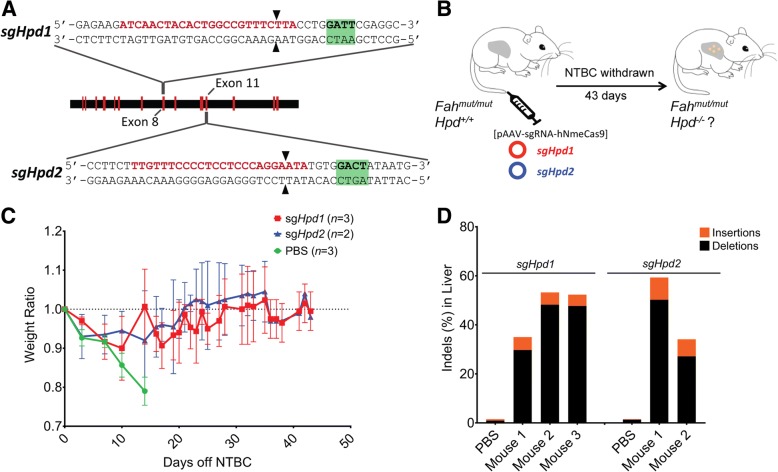Fig. 2.
NmeCas9-mediated knockout of Hpd rescues the lethal phenotype in Hereditary Tyrosinemia Type I Mice. a Schematic diagram of the Hpd mouse gene. Red bars represent exons. Zoomed-in views show the protospacer sequences (red) for targeting exon 8 (sgHpd1) and exon 11 (sgHpd2). NmeCas9 PAM sequences are in green and double-stranded break locations are indicated (black arrowheads). b Experimental design. Three groups of Hereditary Tyrosinemia Type I Fah−/− mice are injected with PBS or all-in-one AAV-sgRNA-hNmeCas9 plasmids sgHpd1 or sgHpd2. c Weight of mice hydrodynamically injected with PBS (green), AAV-sgRNA-hNmeCas9 plasmid sgHpd1 targeting Hpd exon 8 (red) or sgHpd2-targeting Hpd exon 11 (blue) were monitored after NTBC withdrawal. Error bars represent three mice for PBS and sgHpd1 groups and two mice for the sgHpd2 group. Data are presented as mean ± SD. d Stacked histogram showing the percentage distribution of indels at Hpd in liver of Fah−/− mice obtained by TIDE after hydrodynamic injection of PBS or sgHpd1 and sgHpd2 plasmids. Livers were harvested at the end of NTBC withdrawal (day 43)

